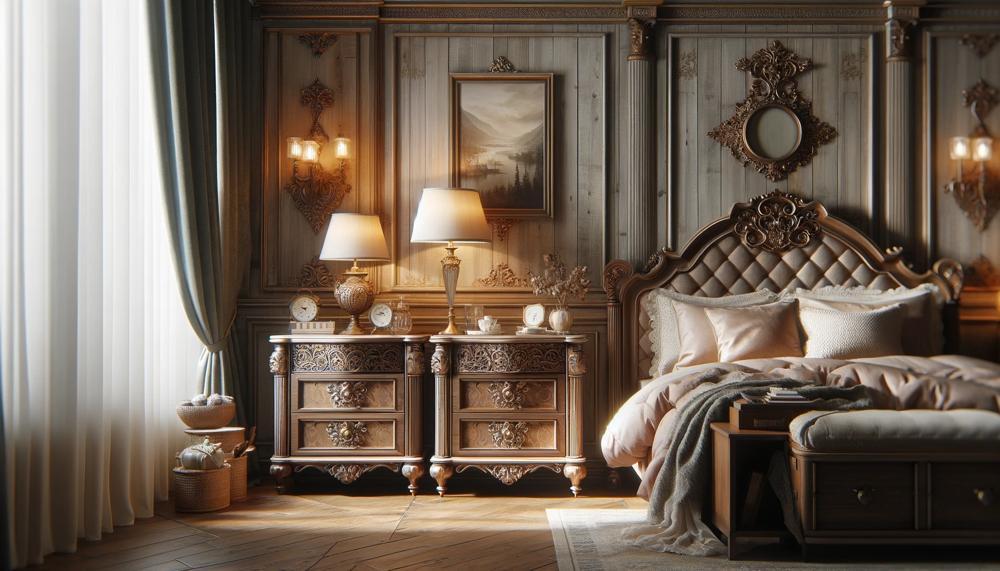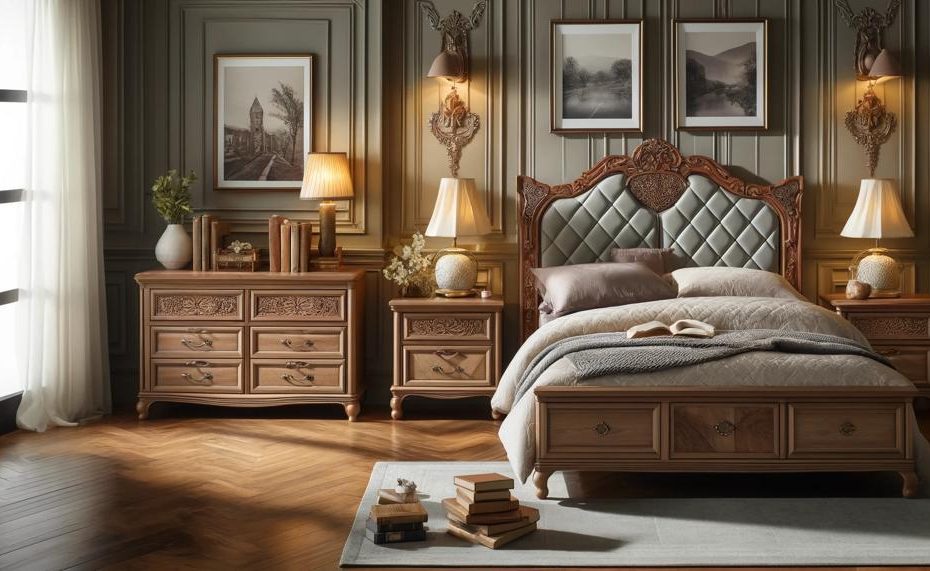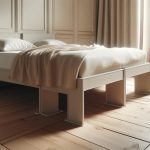In the world of interior design, the question of whether nightstands need to match dressers is more than just a matter of personal taste—it’s a doorway into the vast possibilities of bedroom aesthetics.
As we dive into this debate, we uncover not just answers, but a landscape of ideas that could transform your bedroom from a simple sleeping area into a cohesive sanctuary of style and comfort. Whether you’re a minimalist seeking harmony or a maximalist celebrating diversity, the relationship between your nightstand and dresser holds the key to achieving your ideal bedroom vibe.
So, do nightstands have to match dresser?
No, nightstands and dressers don’t necessarily have to be a perfect match, but they should complement each other in terms of design and color. Here are some tips to consider when coordinating these bedroom furniture pieces:
- Style: If you’re aiming for a specific theme in your bedroom, you can choose nightstands and a dresser that fit that theme. They don’t need to be identical, but they should share common elements. For example, in a Scandinavian-themed bedroom, the nightstands and dresser might have similar design features without being exact replicas.
- Color: Coordinating through color is an easy way to ensure harmony. You can select a different color for each piece—just make sure the colors complement each other and the overall room decor. For instance, a white dresser paired with a wooden nightstand can create a cohesive look if the colors work well together.
- Material: Nightstands and dressers can have different materials yet still match. Consider the overall style and silhouette. In the image above, both the dresser and nightstand have a boho style and share a rectangular shape, even though their materials differ.
Join us as we navigate through these considerations, offering you both the confidence to trust your instincts and the knowledge to make informed decisions that reflect your unique style and needs.
Contents
Design Elements For Coordinating The Dresser And The Nightstand
Coordinating a dresser and nightstand in a bedroom calls for a blend of aesthetics and functionality, ensuring both pieces not only complement each other but also enhance the room’s overall ambiance. Here’s a detailed breakdown of the key design elements to consider:
| Element | Description | Examples |
|---|---|---|
| Matching vs. Complementary | While matching sets offer a uniform look, complementary pieces add depth and interest, reflecting personal style. | A vintage oak dresser with a modern oak nightstand, sharing a similar finish but different design eras. |
| Theme | Choosing a theme helps in selecting pieces that tell a cohesive story, be it modern, rustic, or eclectic. | A coastal theme might feature a dresser with a weathered finish and a nightstand with sea glass knobs. |
| Color Coordination | Colors don’t have to match exactly but should harmonize with the room’s palette for a unified look. | A slate grey dresser paired with a charcoal grey nightstand, both accented with brass hardware. |
| Materials and Design Elements | Mixing materials and design elements can add texture and contrast, enhancing visual interest. | A solid wood dresser paired with a metal-framed nightstand, both incorporating minimalist lines. |
| Creative Options | Personalizing pieces through paint or added details can create a unique and cohesive aesthetic. | Updating a nightstand and dresser with matching geometric drawer pulls or complementary paint hues. |
| Placement | Consider practicality and space when deciding placement, ensuring ease of use and accessibility. | Positioning the dresser opposite the bed for balance, with the nightstand within arm’s reach. |
| Nightstand Height | Choose a nightstand at least as tall as the mattress, for practicality and aesthetic balance. | A nightstand 28 inches high paired with a bed whose mattress sits at 24 inches. |
| Symmetry vs. Asymmetry | Symmetrical arrangements offer a traditional, balanced look, while asymmetry can add dynamism and flair. | Identical nightstands for symmetry, or one large nightstand and a smaller table on the other side for asymmetry. |
| Personal Style | Opting for pieces that resonate with your taste over matching sets can imbue the space with personality and charm. | A sleek, mid-century modern dresser beside a simple, contemporary nightstand, reflecting a love for mixed eras. |

Embracing these elements when selecting a dresser and nightstand can transform a bedroom into a harmonious retreat that’s both stylish and functional.
Conclusion
The question of whether nightstands and desks should match bedroom furniture creates a space for personal expression and imagination. The main point of this discussion is not to give you strict rules but to help you understand and use how personal style, design unity, and usefulness work together to make places that are uniquely yours. Many people see their bedroom as a place of peace and quiet. When it comes to decorating, the choice of whether to use similar or clashing furniture can have a big effect on the general mood and look.
For balance and beauty, this talk asks you to think about things like color schemes, mixing and matching materials, theme cohesion, and where to put furniture in a room. The goal is to make a cohesive space that fits your personal style and improves the function and comfort of the bedroom, whether you like a smooth, organized look or enjoy the lively contrast of different styles.
Moving away from standard-matched sets and toward more unique, personalized sets is part of a larger trend in interior design toward rooms that tell a story—your story. You can make choices that not only improve the look of your bedroom but also make it a better place to live by thinking about things like how the room flows, how useful something is, and your personal taste in style.





